The 1948 Tuckers: The Cammack Collection
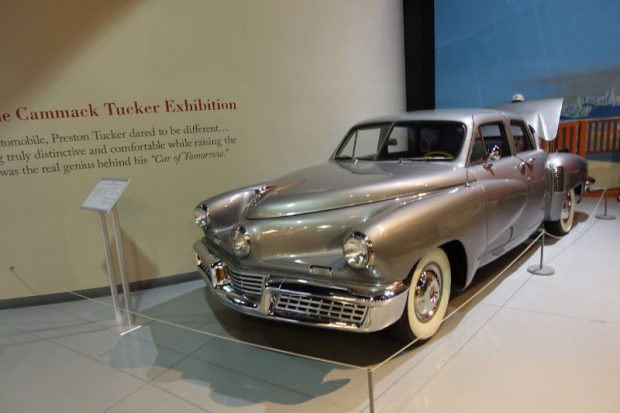
My visit to the Hershey Fall Meet last month would not have been complete without a visit to see the world's largest collection of Tucker 48 automobiles and automobilia at the Cammack Gallery of the AACA Museum.
Below are photos and memorabilia of one of my favorite collectible automobiles.
Enjoy,
Howard Kroplick
1948 Tucker Model '48 #1001
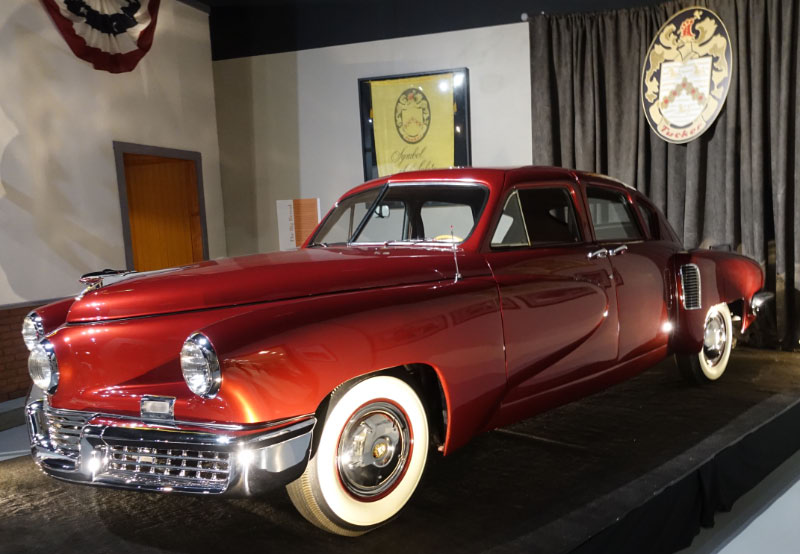
This Tucker was the first car off the prototype production line. It was David Cammack’s second Tucker, purchased in 1973 at the urging of his brother.
It also features the rubber torsion tube suspension, which was plagued by severe toe-in during braking. It is painted in its original Tucker maroon 600 color scheme.
After Chassis #1003, the rear fenders were changed to allow wheel removal, while the suspension was converted to a rubber sandwich style arrangement.
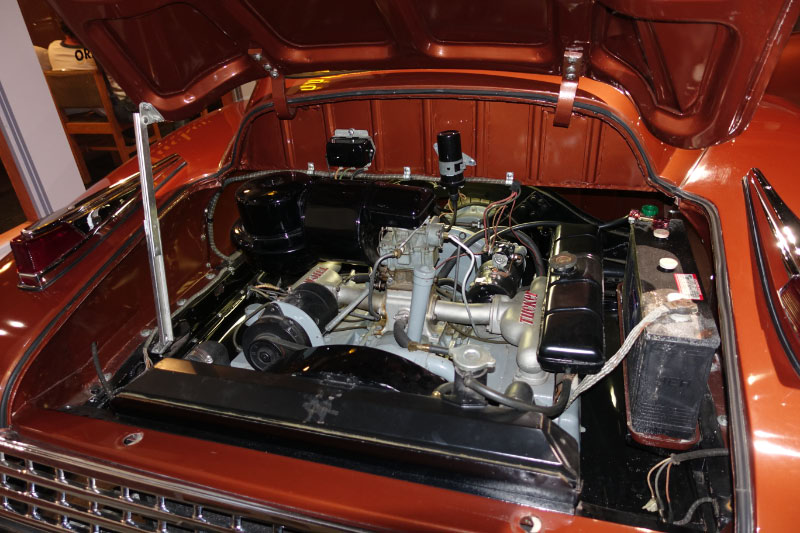
Tucker #1001utilizes the Tucker Y-1 transmission, a Tucker-modified Cord 810/812 front-wheel-drive unit. Museum Collection: Permanent Loan Courtesy of David Cammack
1948 Tucker Model'48 #1022
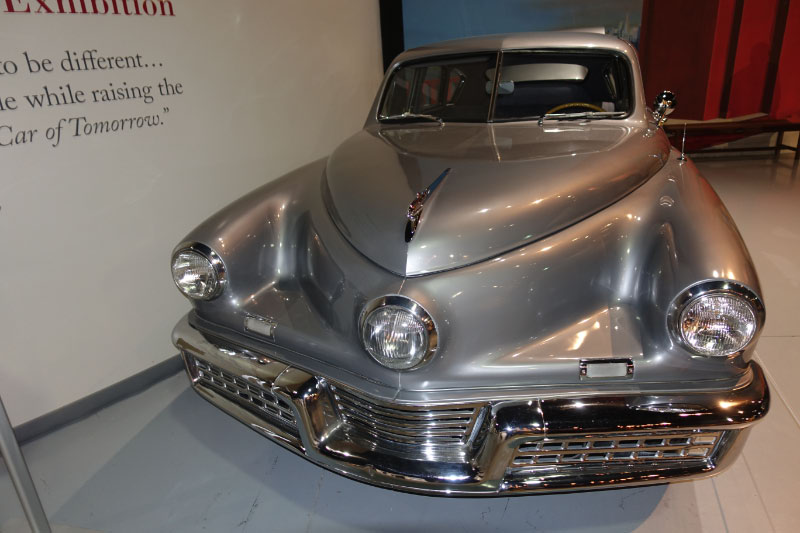
This is the first Tucker purchased by the late David Cammack, and the car that started his obsession with the make. This car utilizes the Tucker Y-1 transmission, a Tucker-modified Cord 810/812 unit, and features the improved rubber sandwich suspension design. It is painted in its original Tucker Grey (silver) 500 color scheme.
Museum Collection: Permanent Loan Courtesy of David Cammack
1948 Tucker Model '48 #1026
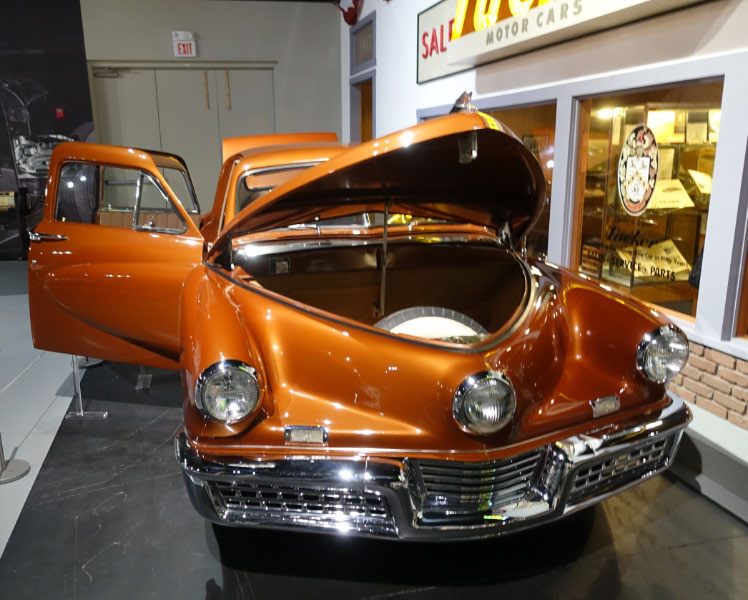
Considered by many the most valuable production Tucker, #1026 is the only remaining complete Tucker with an automatic transmission. This Tuckermatic R-1-2 unit is one of three different versions of the Tuckermatic made, the R-1, R-1-2, and R-3, (R for Warren Rice, its designer). The first version, the R-1, was not installed on any of the final cars. It required the engine to be off in order to select a gear. The R-1-2 was improved by adding a layshaft brake to allow gear selection while the engine was running. This version was installed on cars #1026 and 1042 only. The R-3 version had further improvements including a centrifugal clutch to help shifting between forward and reverse even further, but it was never installed in any of the final cars.
Because the two torque converters on the Tuckermatic made the engine/transmission unit longer, the fuel tank in the Tucker ’48 had to be moved from behind the rear seat to in front of the dashboard for all Tuckers from car #1026 forward, even though only two of them actually had the Tuckermatic installed. This had the added advantage of improving weight distribution on the car.
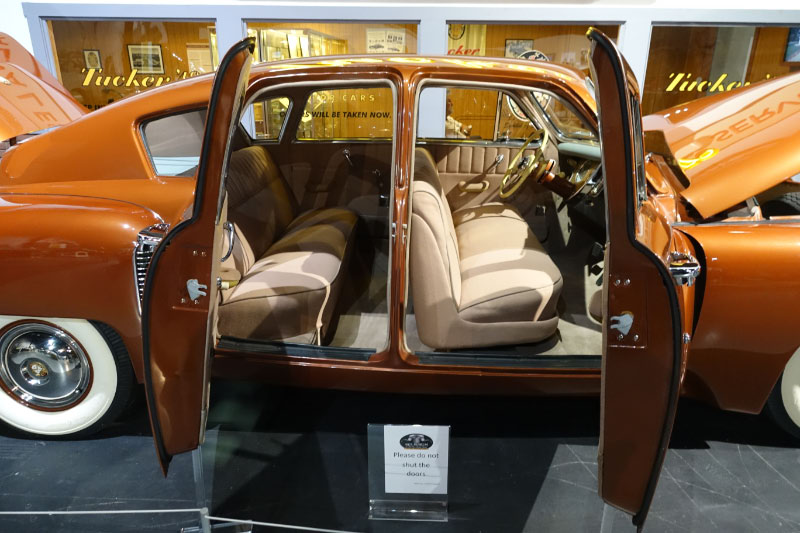
On cars #1026-on Tucker finally settled on a suspension design with a modified version of the rubber torsion tube with the toe-in braking problem corrected. Chassis # 1025 and prior used mechanical linkage for the Cyclops eye, while #1026 and beyond used a new cable operated system.
Museum Collection: Permanent Loan Courtesy of David Cammack
Photos from the Exhibition
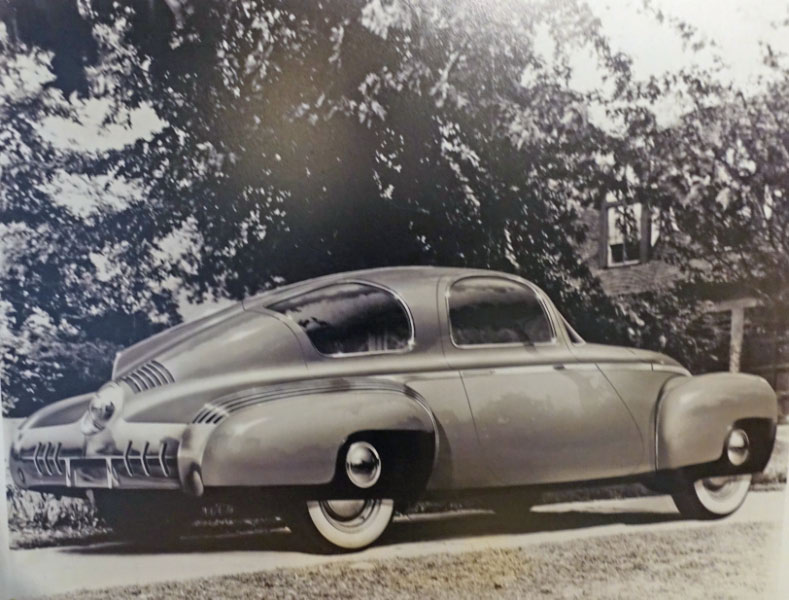
A Tucker protoype.
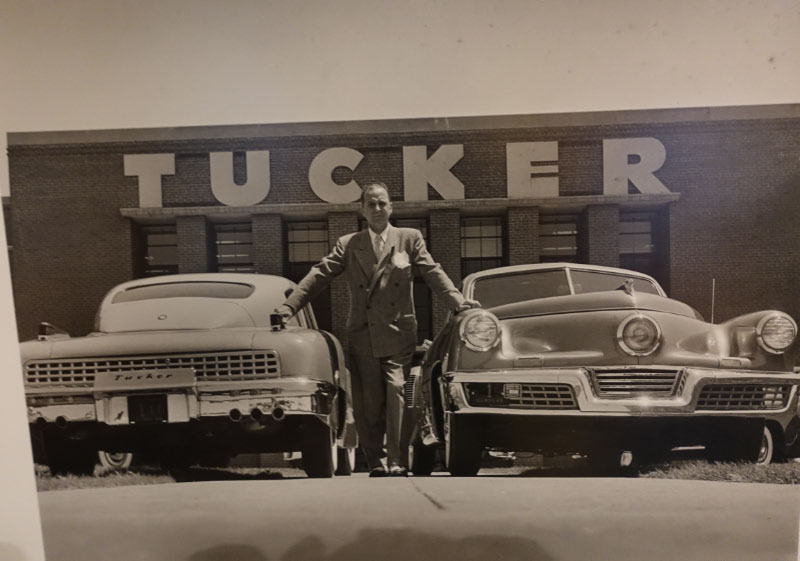
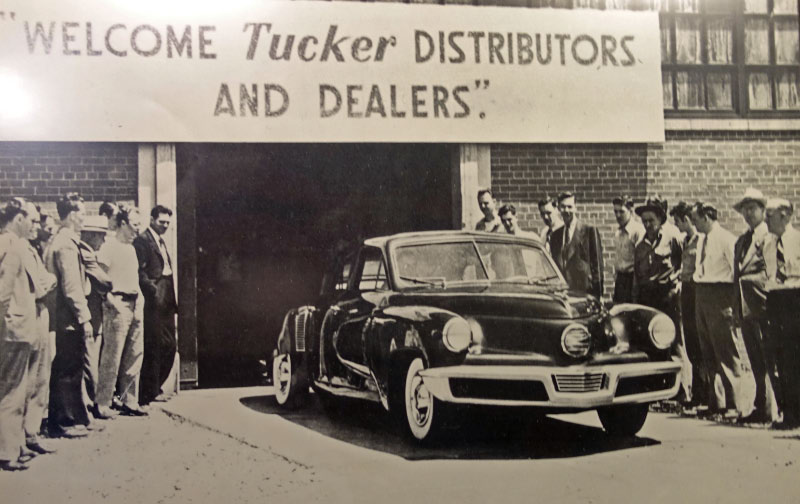

1948 Tucker Brochure
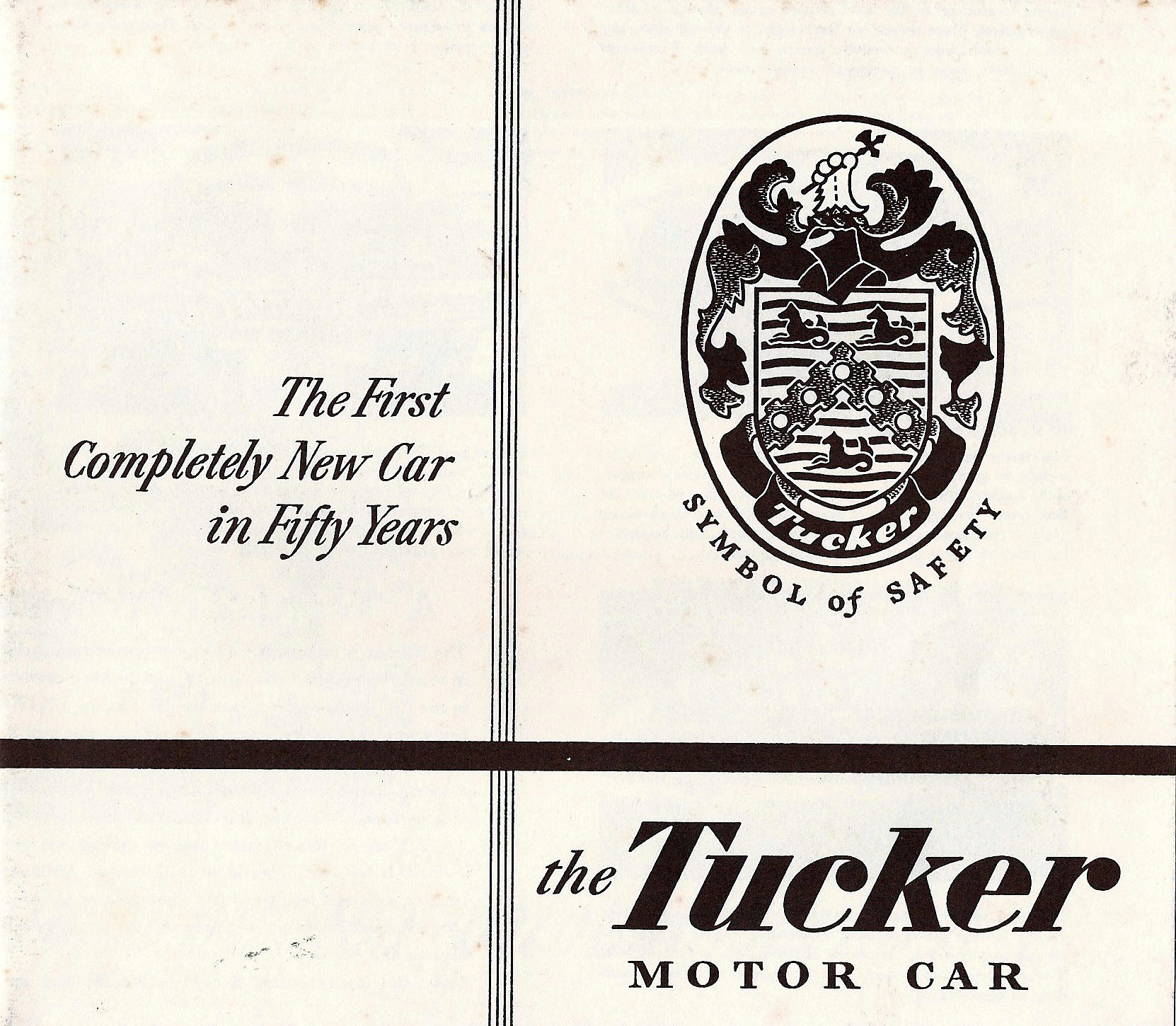
The Helck Family Collection includes this barely opened 1948 sales brochure.
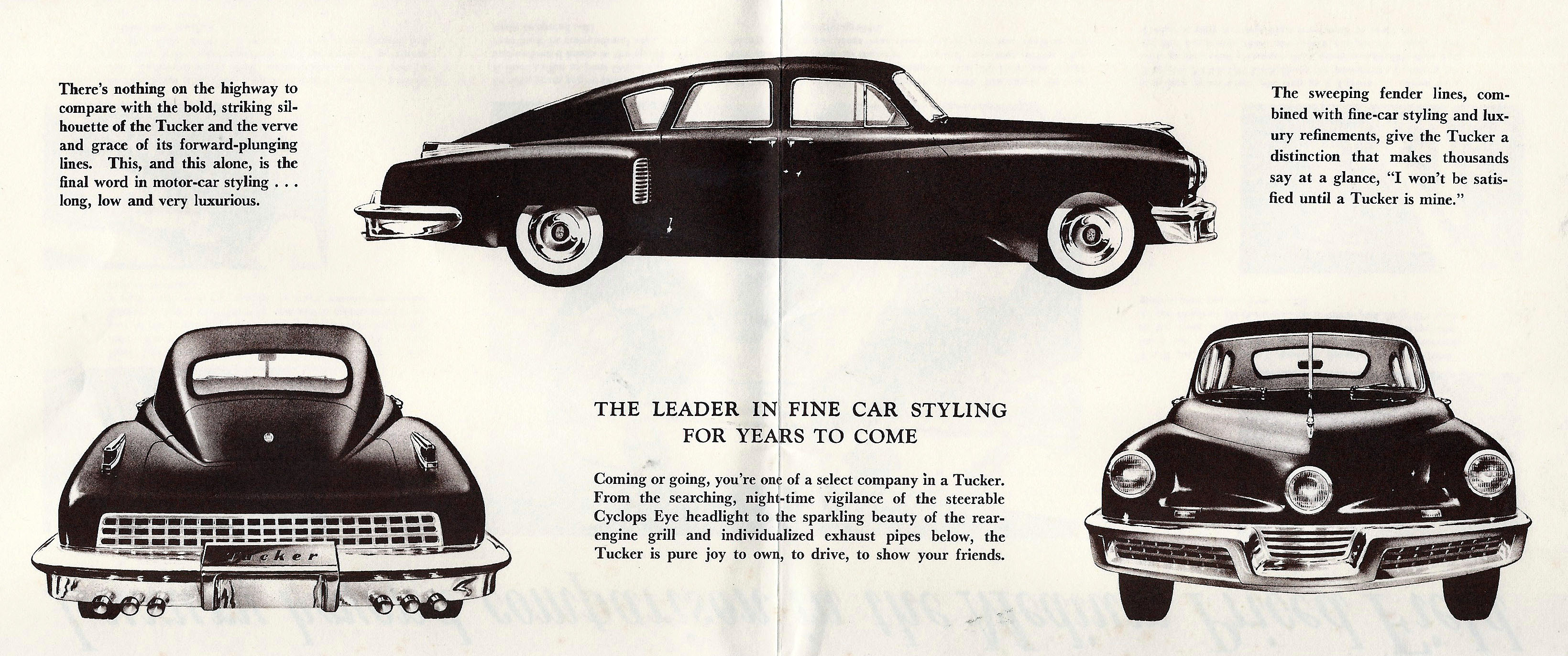
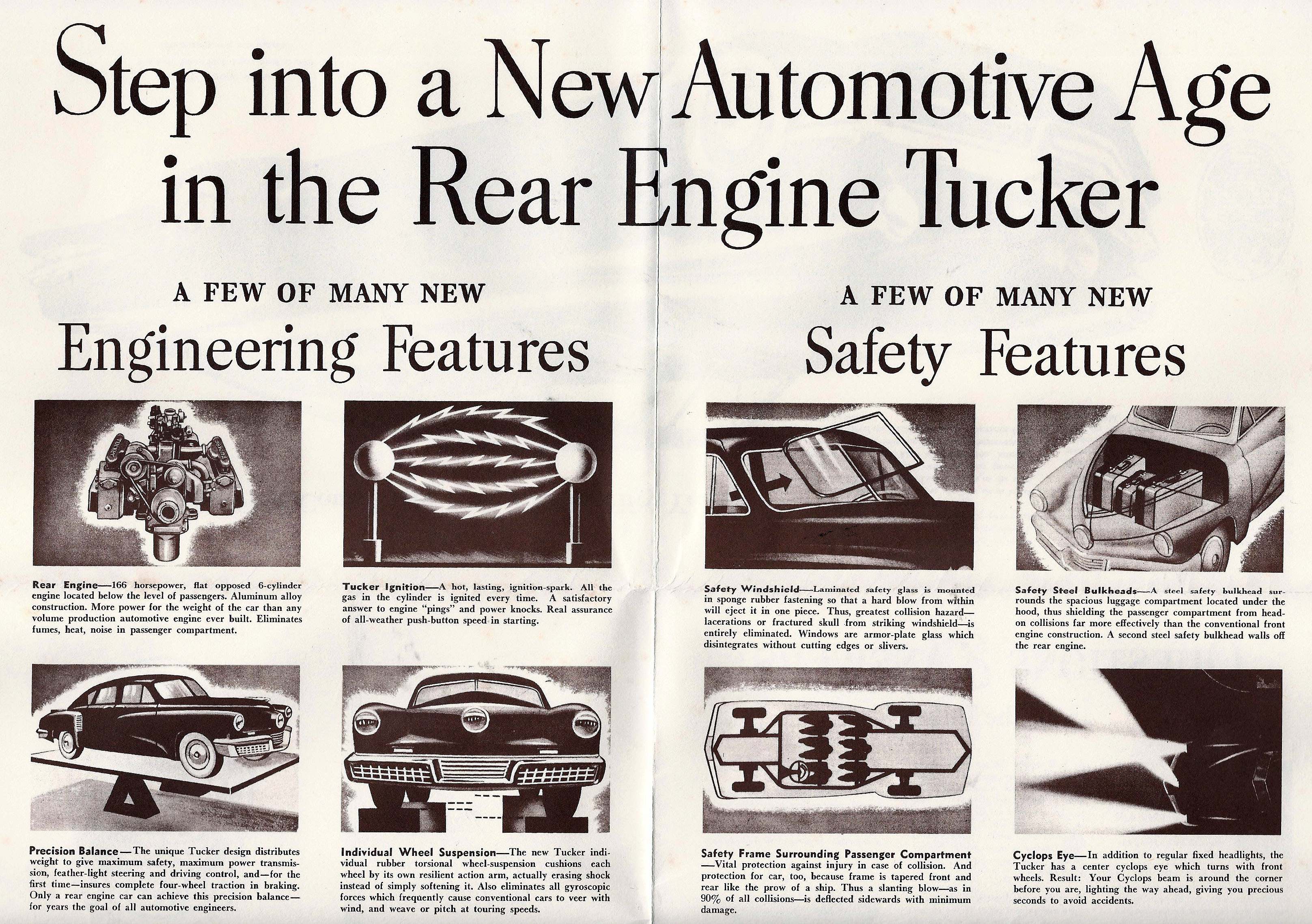
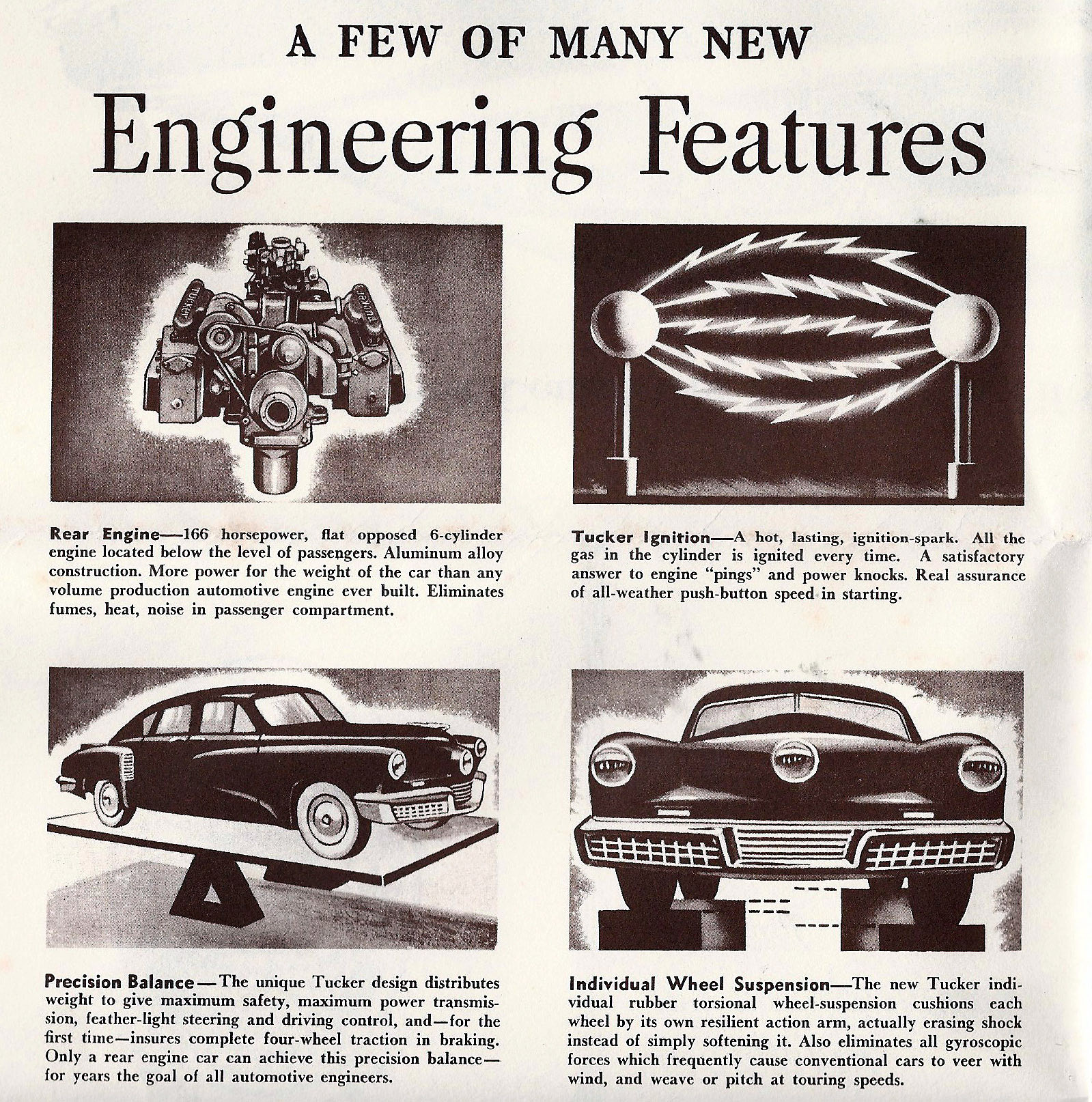
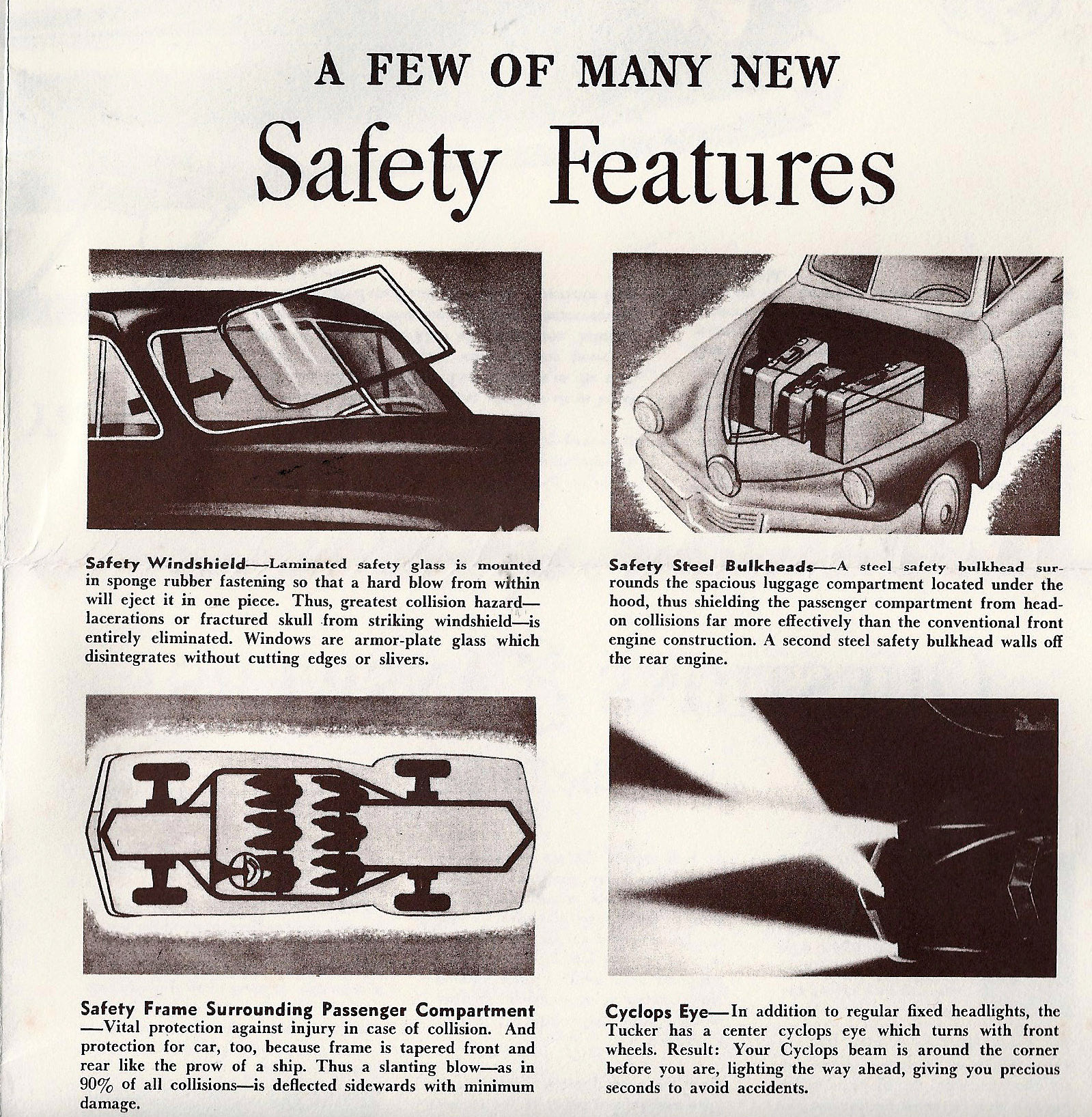
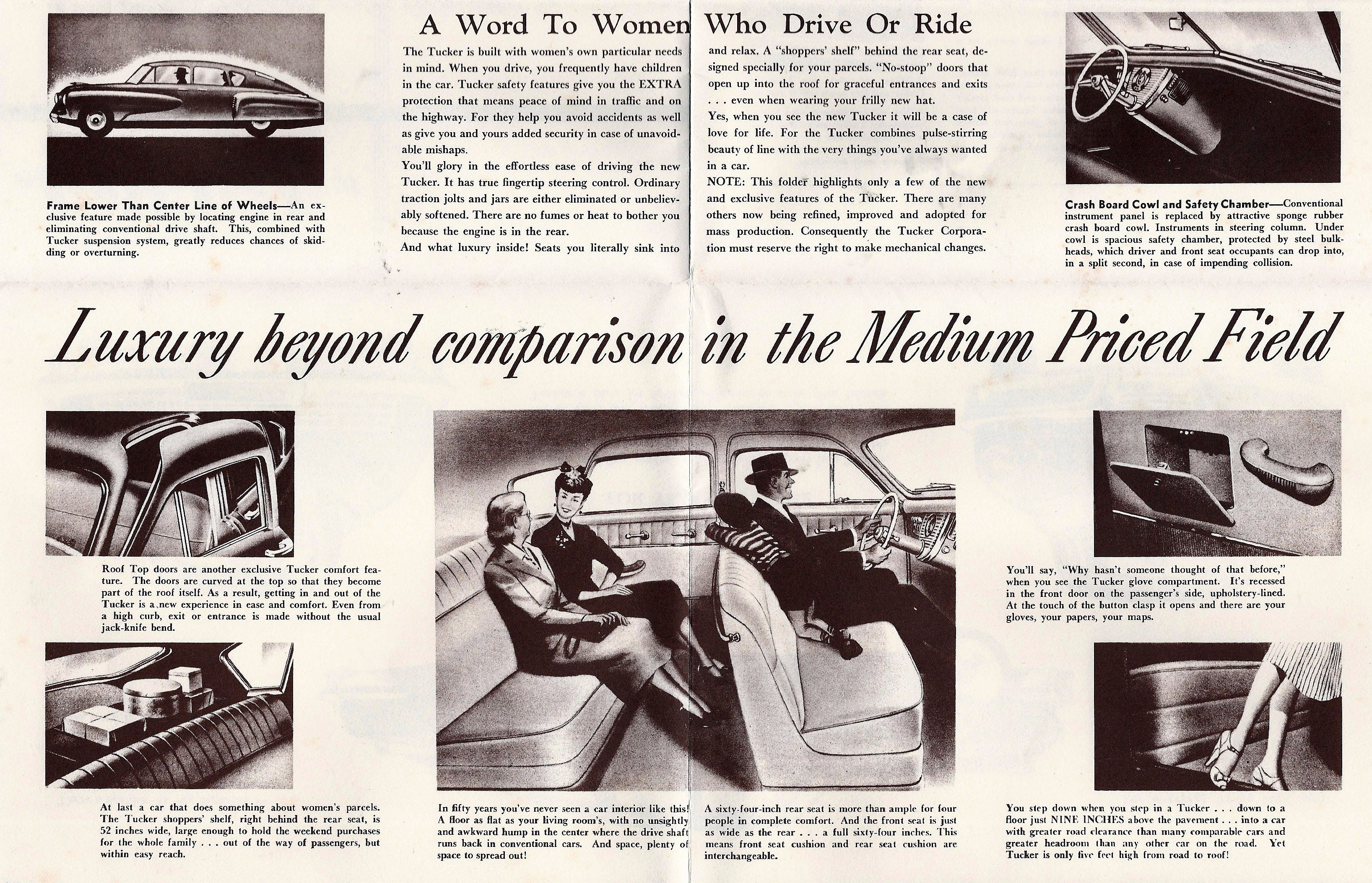
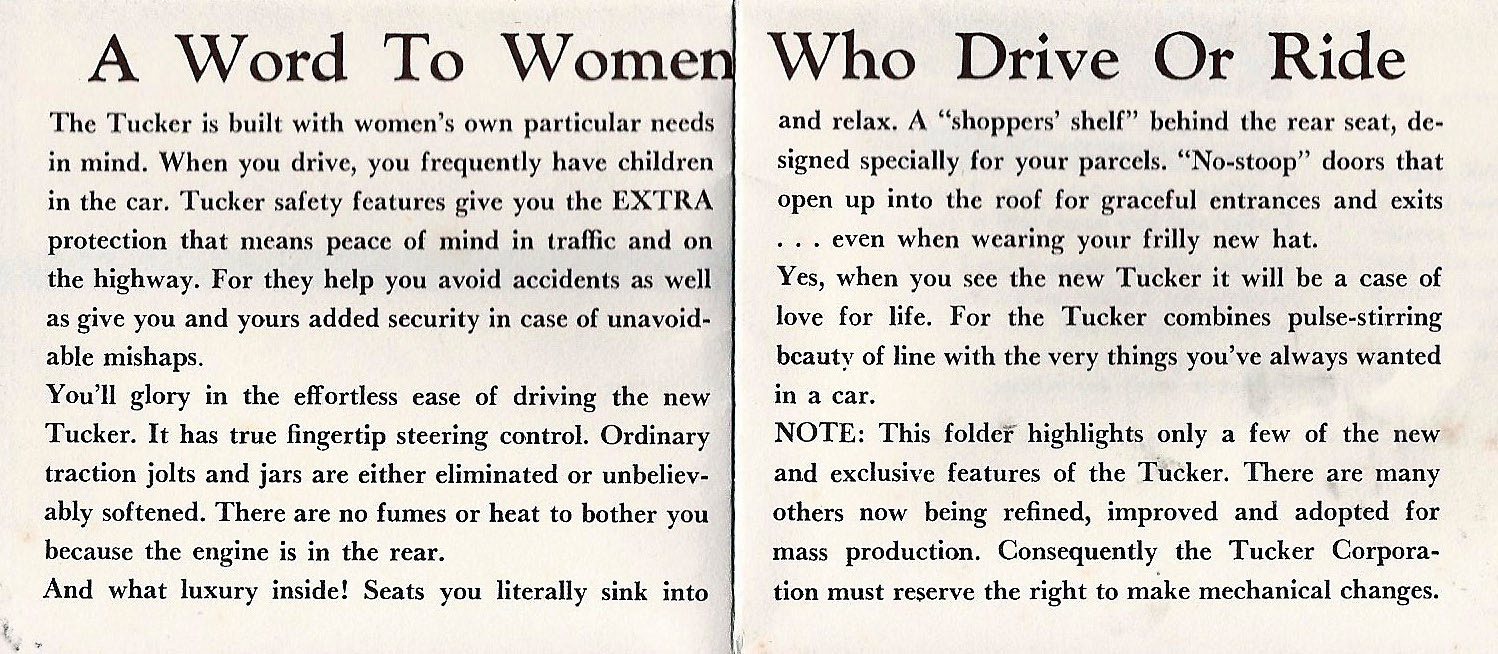
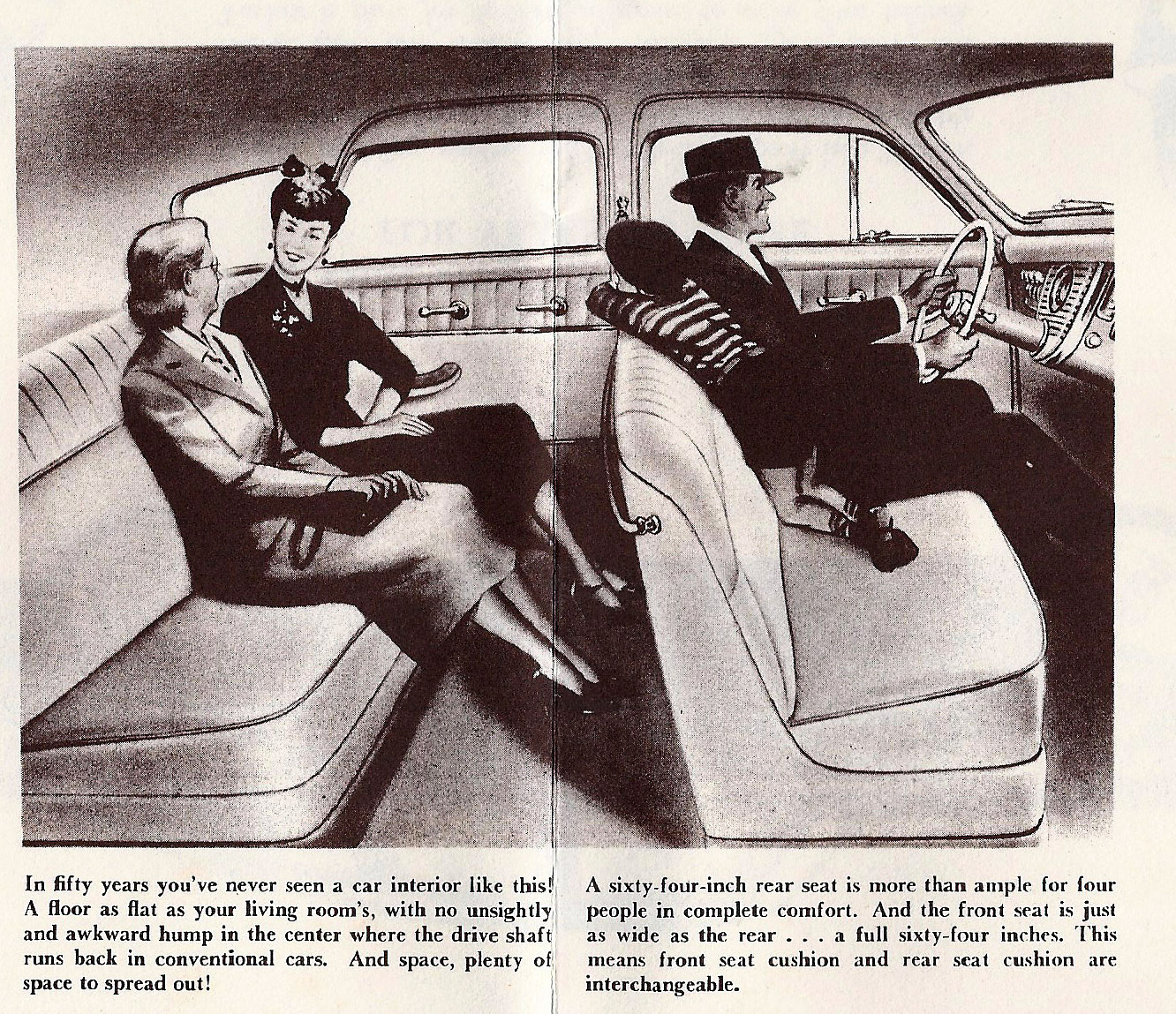
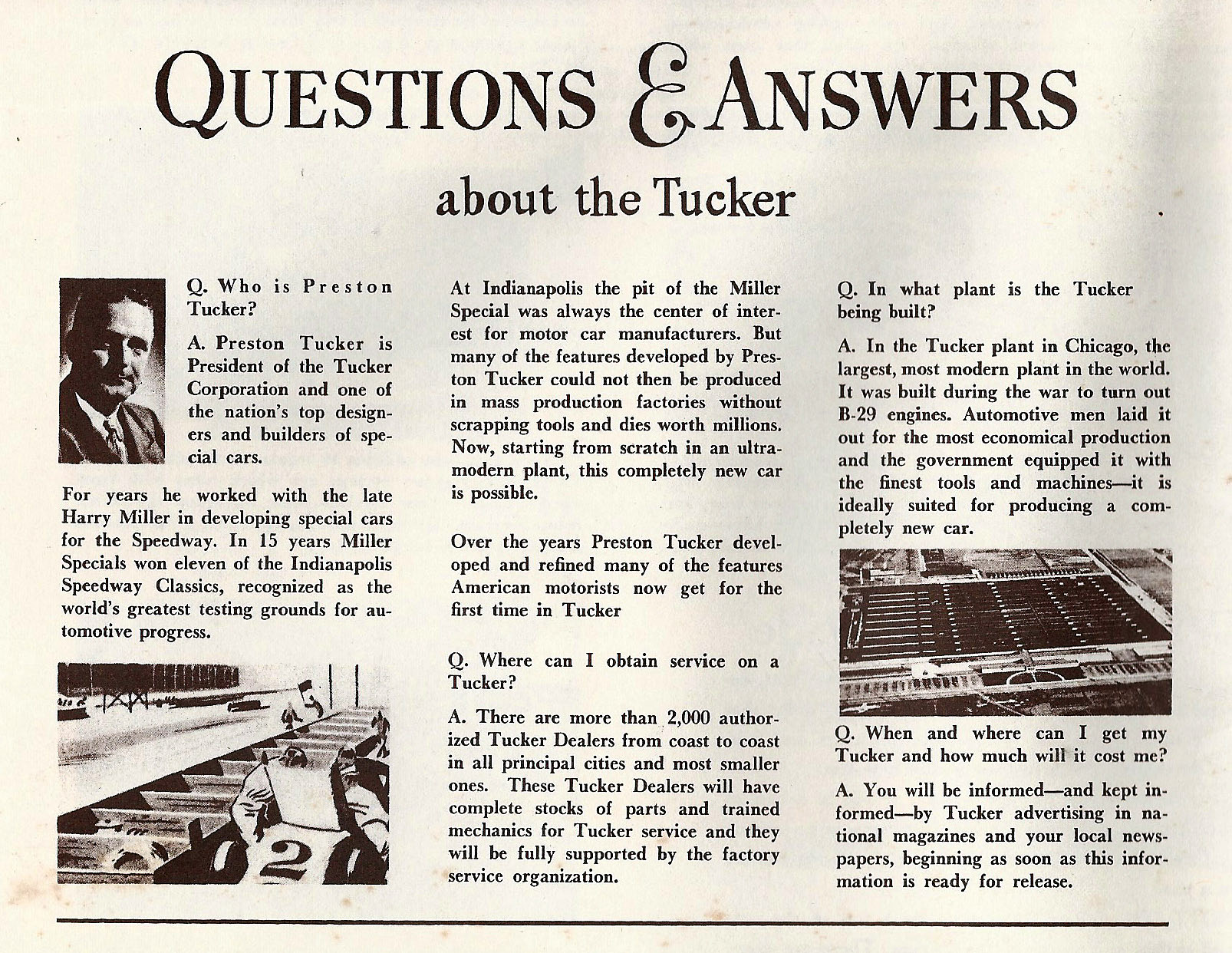

Comments
When I was a kid growing up in West Hempstead, I remember a Tucker dealership on Fulton St. in Hempstead just before where the A&S department store was built. I knew is was to be a Tucker dealership because the big Tucker sign was already installed on the facade of the building. Needless to say, that building never saw a Tucker.
Rog
Thanks for the Tucker presentation. It brings back memories(I was 10 years old in 1948) of my father showing me a Tucker (don’t remember where this was) and trying to explain some of its features. I was especially entranced by the center headlight.
Ken Harris
From Robert R:
Wonderful stuff on the Tucker, Howard.
I remember seeing my first one on display in the lobby of 30 Rock.
I was at the Hershey meet last year (great weather) this year didn’t go - rain, but last year my first stop was the AACA museum where the Tucker’s where, the museum is great, almost forgot to go to the car show that Saturday. Howard thanks for the narration of what I had saw. Mark
Thanks for posting. Seems quite a few major technical details remained to be resolved before it could have been sold. I recall reading that Tucker had workers trying to recover old Cord parts for use. With an additional 12 months of testing who knows what might have been. Any thoughts on how the many Tuckers shown in the movie were obtained? I don’t think it was an illusion.
____________________________________________________________
From Howard Kroplick:
Ken, according to IMB trivia about the film, the “Tuckers” used in the film were replicas:
http://www.imdb.com/title/tt0096316/trivia
However, this 2008 New York Time articles states that several original Tuckers were used in the film:
http://www.nytimes.com/2006/10/29/automobiles/collectibles/29TUCKER.html
Just to let you know about 1948 Tucker time period, in 1947 the all new Kaiser and the Studebaker came out with modern designs compared to the older post war cars of that time, in 1948 GM came out with the all new large body for Cadillac and Oldsmobile 98 (Buick postpone until 1949), then there’s was the sleek, step down 1948 Hudson, both had 2 piece curve windshield. The Tucker design was somewhat dated at the time.